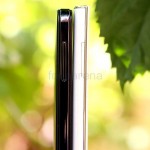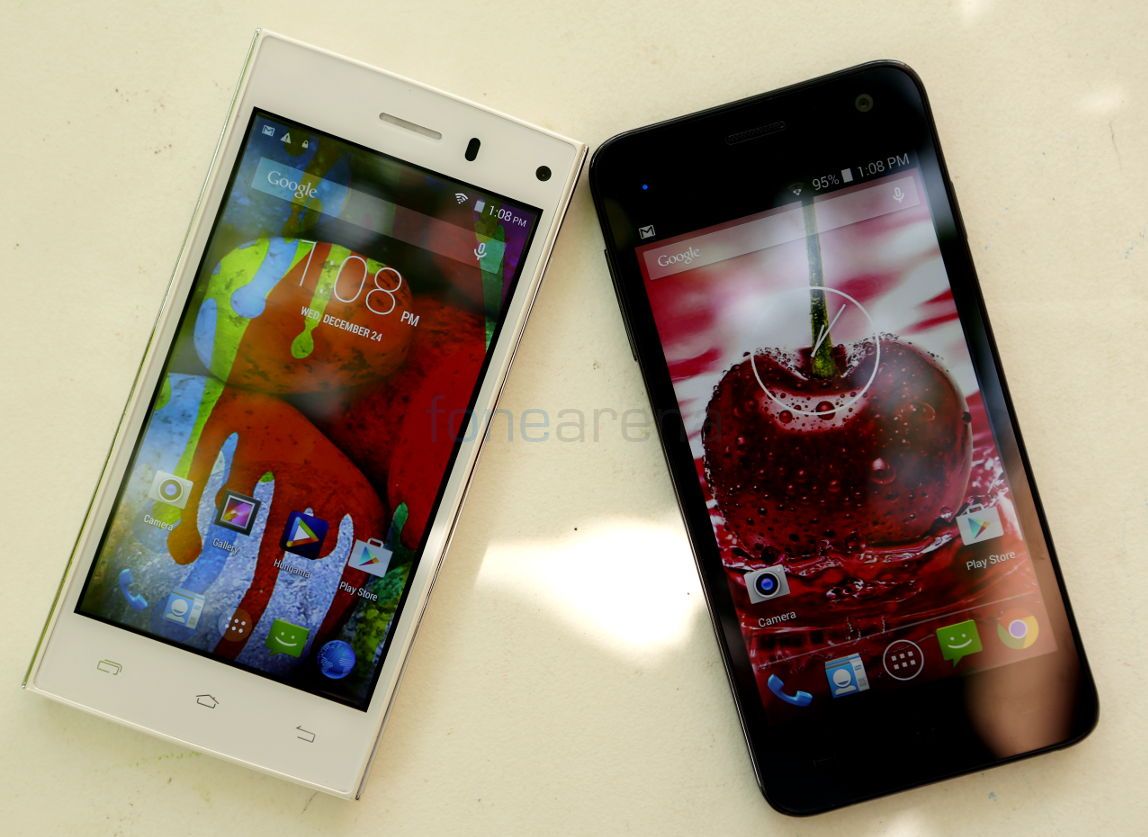
In recent months several Indian smartphone manufacturers have targeted low-mid range segment. Smartphones in this category are compact, offer a small screen that is less than 4.5-inches, and offer specifications usually seen in mid-range smartphones that are priced over Rs. 10,000. The Obi Alligator S454 and Lava Iris X1 belong to this category, so we decided to compare these smartphones. The Obi Alligator S454 was launched last month for Rs. 6,450 and the Lava Iris X1 was originally launched back in May for Rs. 7,999 and the company relaunched the smartphone in August in 8GB variant for the same price.
httpv://www.youtube.com/watch?v=FI7vfCs_8jg
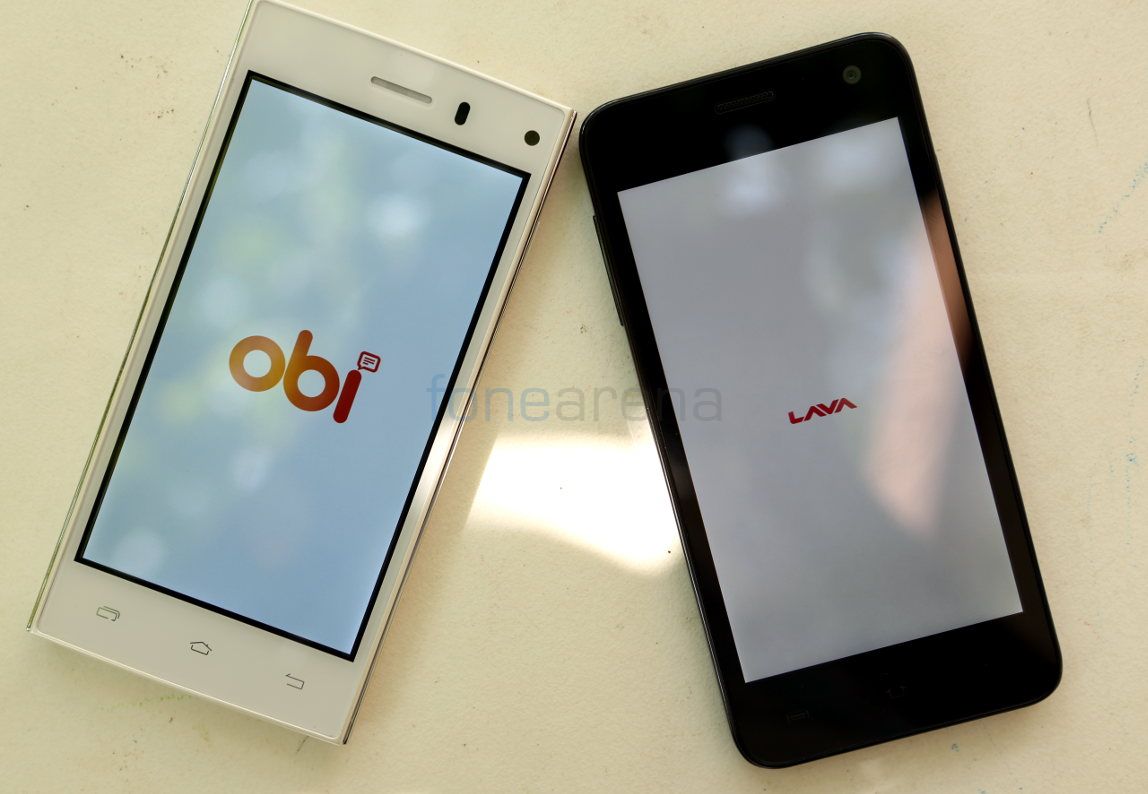
Let’s start with the display. The Obi Alligator S454 has a 960×540 IPS screen at 4.5 inches, while the Lava Iris X1 has a similar 4.5 inches IPS screen, but at FWVGA 850×480 resolution. So the pixels density of the Obi Alligator smartphone is better at 245 PPI, compared to 217 PPI on the Iris X1. The viewing angles, brightness, contrast and sharpness are better in the Obi Alligator. However, we felt that the colors are more saturated on the Iris X1. Overall we find the Obi Alligator better than the Iris X1 since the display is way better in all aspects.

Both the smartphones have a 2-megapixel fixed-focus front-facing camera and have the usual set of proximity and ambient light sensors.
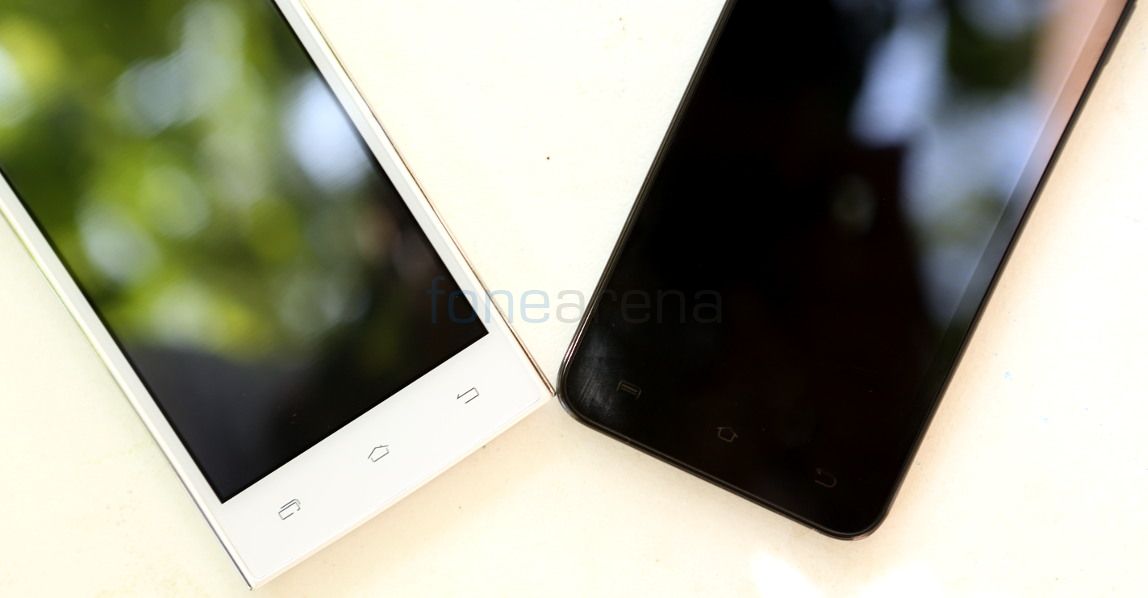
These also have the usual set of capacitive touch buttons below the display.
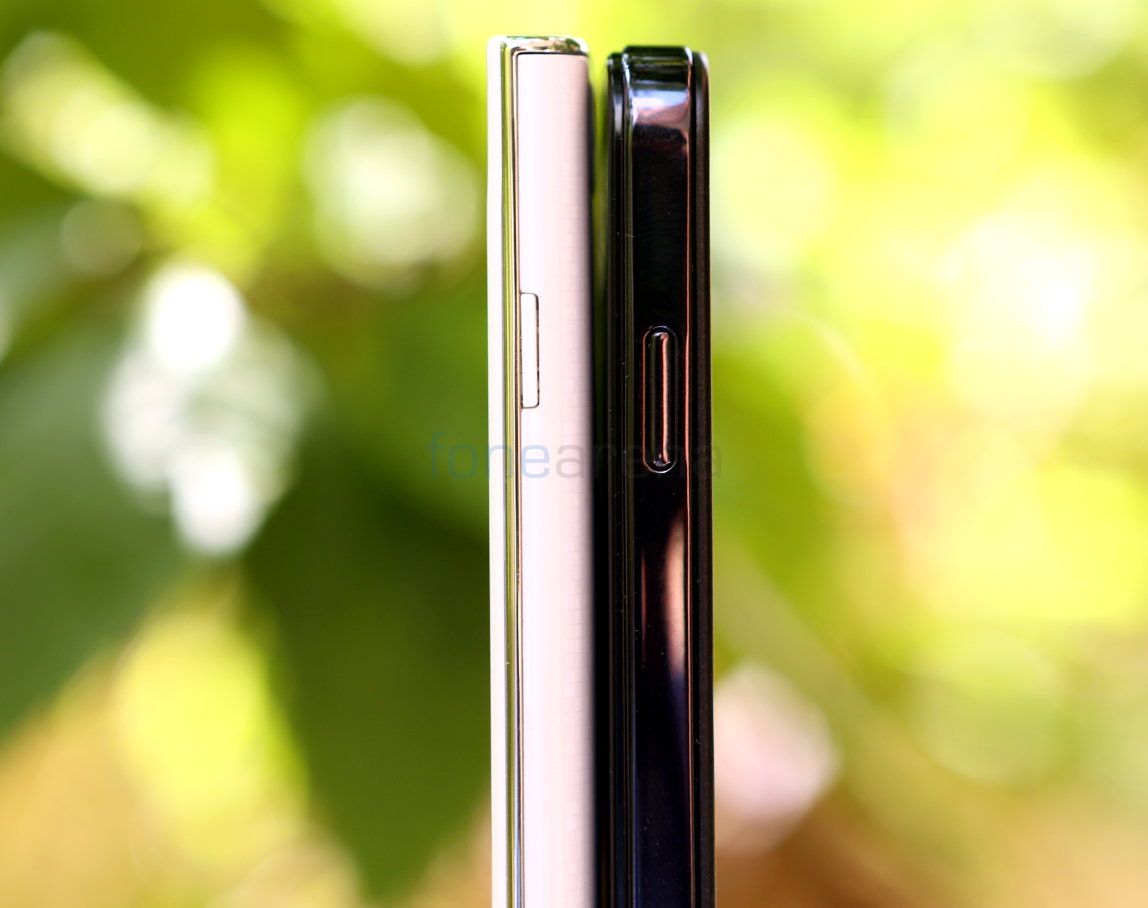
The Iris X1 has a glossy finish on the sides that makes the device slippery, while the Obi’s textured back cover extends to the sides and it has a shiny rim running on the sides. The Obi Alligator is just 8.2mm thick, slightly thinner than the Lava Iris X1 that is 8.9mm thick. All the slots and the button placements are similar in both the smartphones.
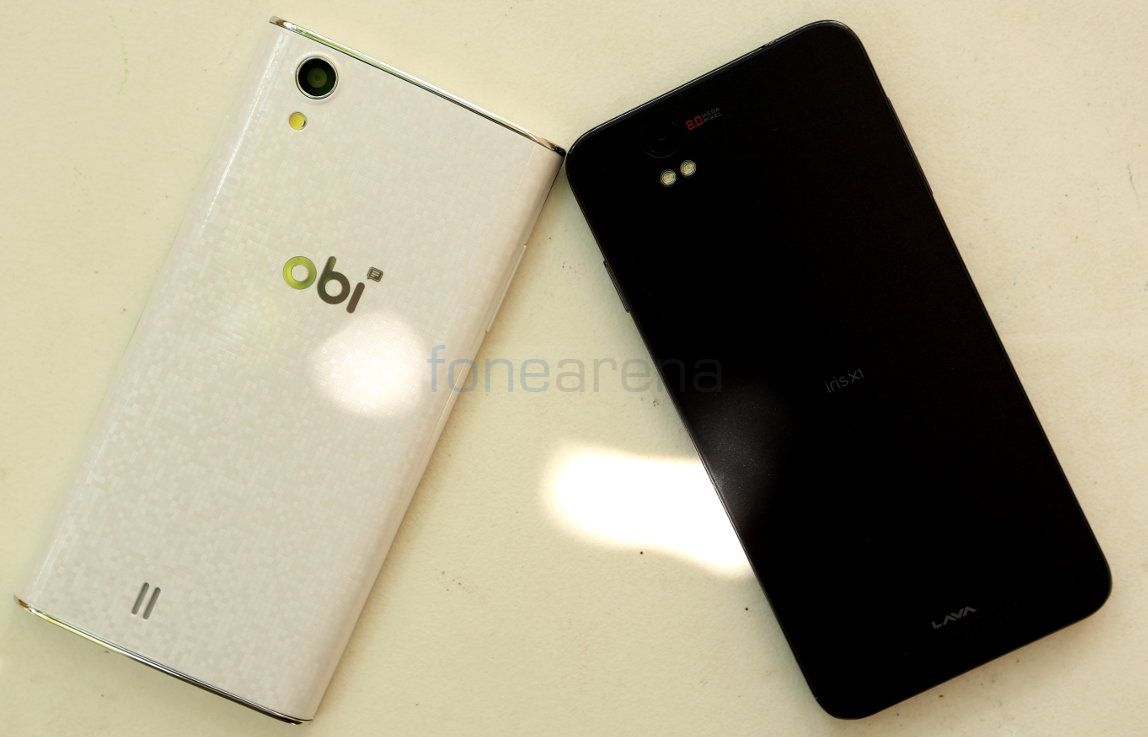
The back cover on the Obi Alligator S454 has a unique pattern, similar to the Nexus 4, while the Iris X1’s removable back cover has a matte finish and the design of the smartphone is similar to the iPhone. Coming to the build quality, both the smartphones have a solid build quality and feels premium. Even though the Obi Alligator looks huge, it weighs just 120 grams, compared to the Lava Iris X1 that weighs 138 grams.
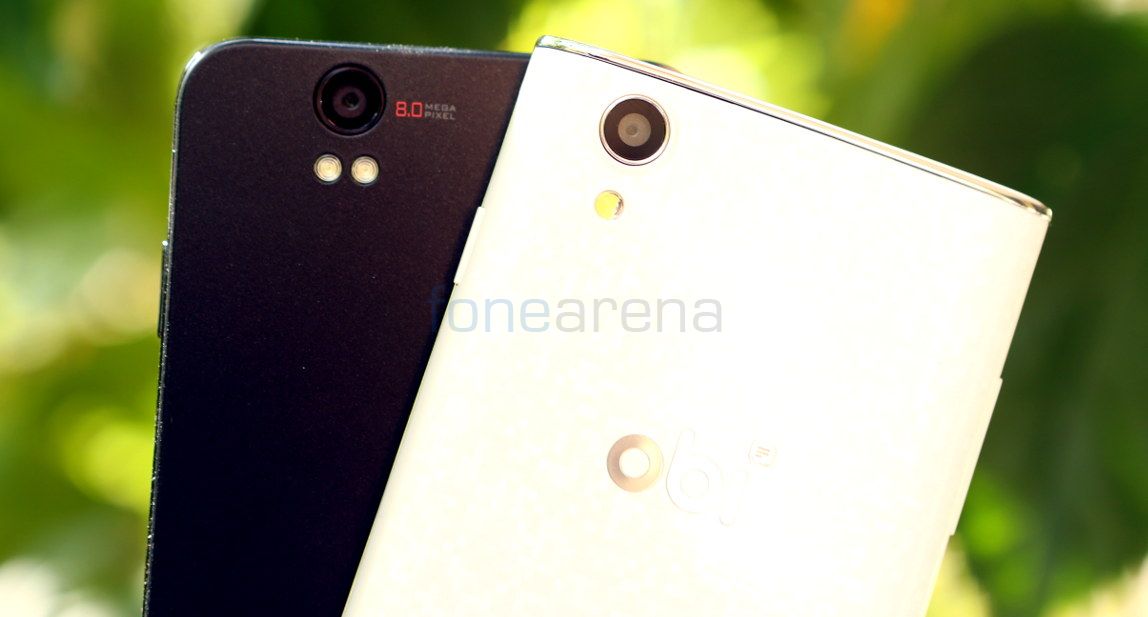
Coming to the camera, both the smartphones have a 8-megapixel rear camera. The Obi Alligator has a single LED flash, while the Iris X1 features dual LED flash and even has a BSI sensor. When it comes to the camera, the Iris X1 is slightly better compared to the Obi Alligator, in terms of the macro and low-light performance. Daylight shots are almost similar. Obi Alligator S454 can record videos at 1080p 30fps, while the Iris X1 supports only 720p video recording.
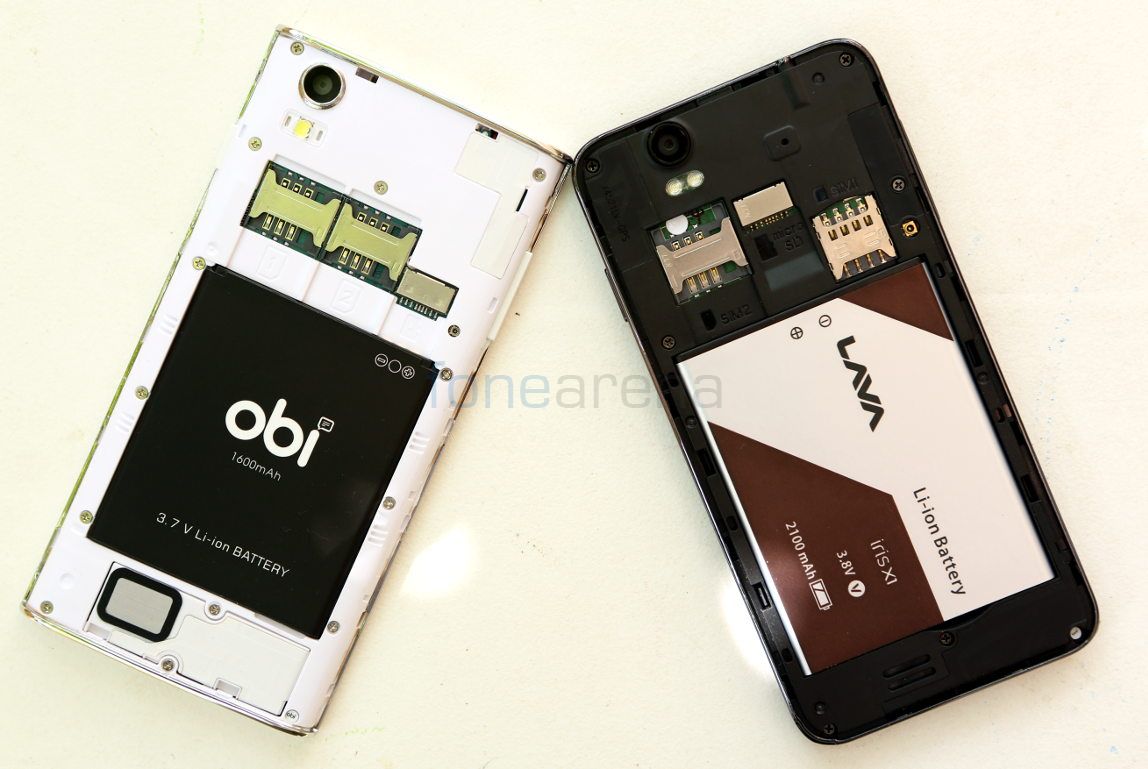
Both the smartphones have Dual SIM support, microSD expansion slot and a removable battery, which is commonly seen on smartphones in this price range. The Obi Alligator has a 1600mAh battery and the 8GB variant of the Iris X1 has a 2100mAh battery.
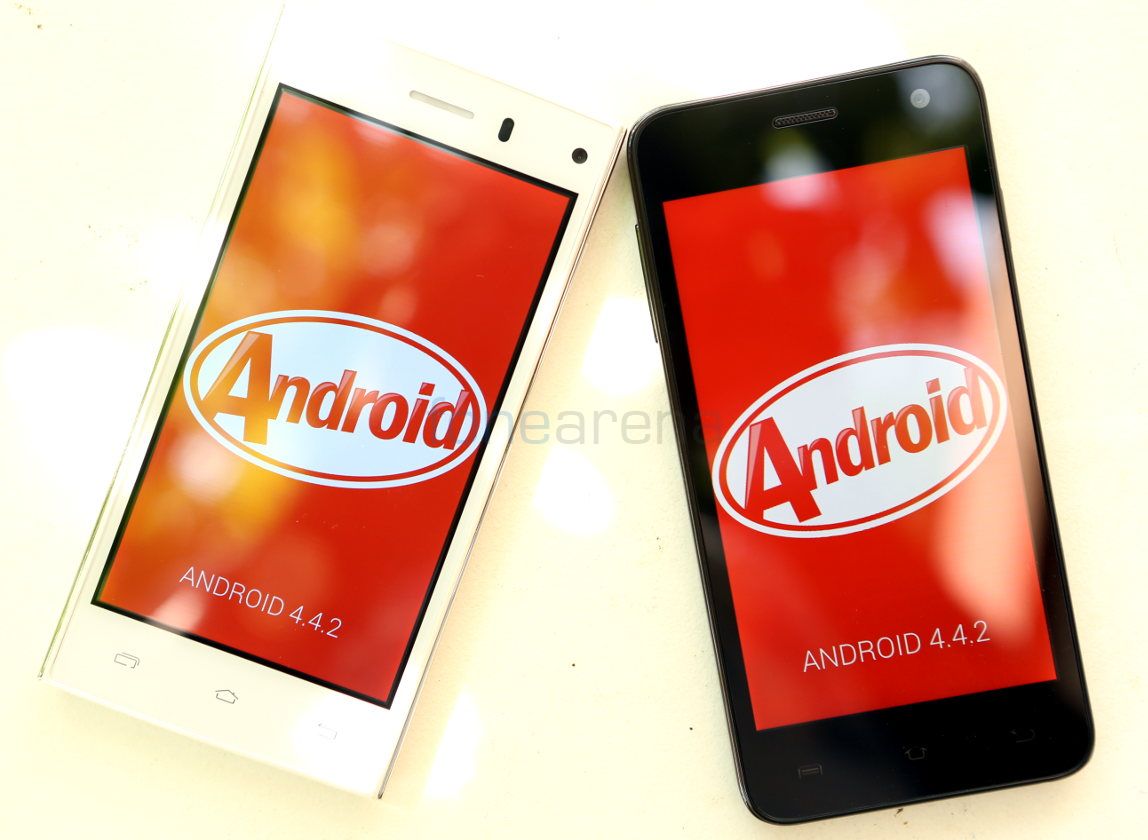
Both these run on Android 4.4.2 (KitKat). The Obi Alligator has a mild skin on top of Android and has a custom skin on notification area, while the Lava Iris X1 is almost stock.
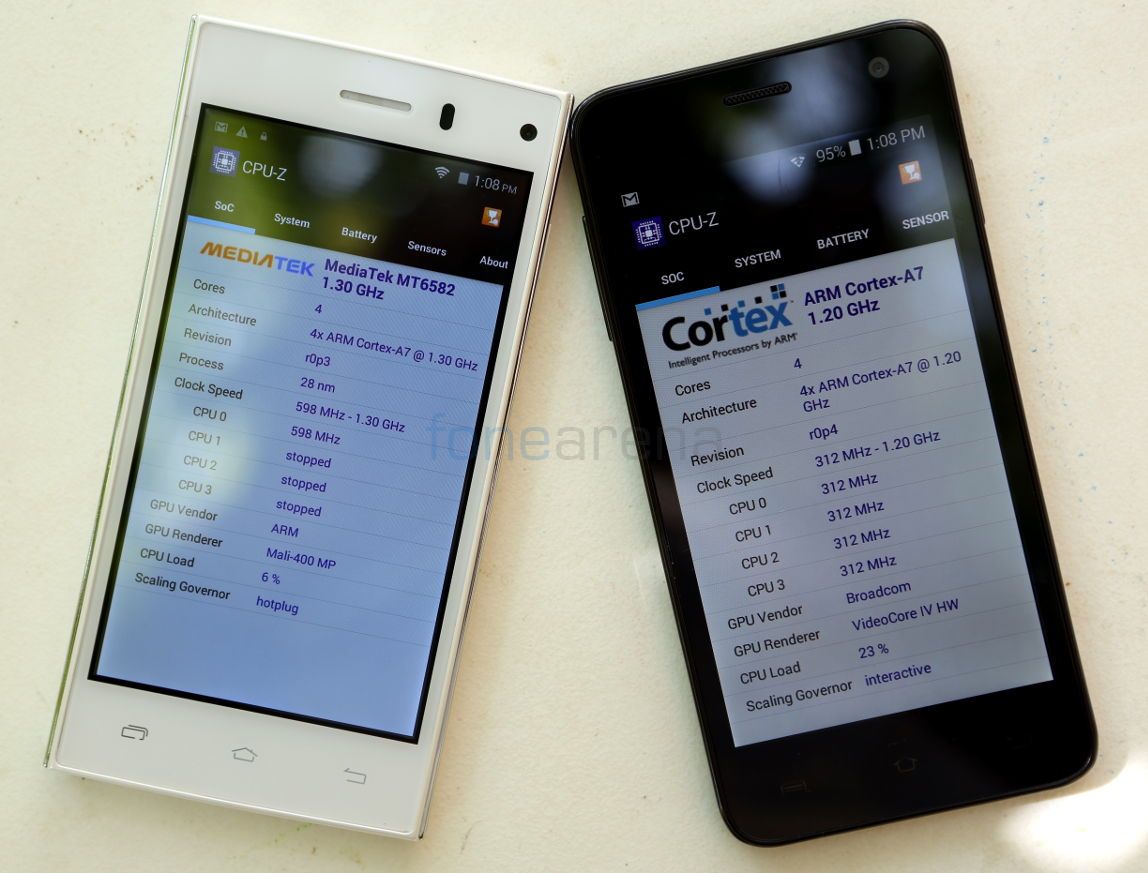
The Obi Alligator is powered by a Quad-Core MediaTek MT6582 processor which has four ARM Cortex-A7 cores clocked at 1.3 GHz per core and has 1GB of RAM. The Iris X1 is powered by a Quad-Core Broadcom BCM23550 processor which also has four ARM Cortex-A7 cores, but this is clocked at 1.2 GHz per core. It also has 1GB of RAM. The Obi Alligator’s performance is good, and the UI is smooth without any lags. As we had already mentioned in the Lava Iris X1 review, the BCM23550 chip from Broadcom is not as powerful as its competitor from MediaTek, hence performance is below average and the UI is laggy.
The Obi Alligator has Mali 400 MP2 GPU, which offers better performance and graphics in gaming, while the Videocore IV GPU is not the best since most high-end games had frame drops and are laggy.
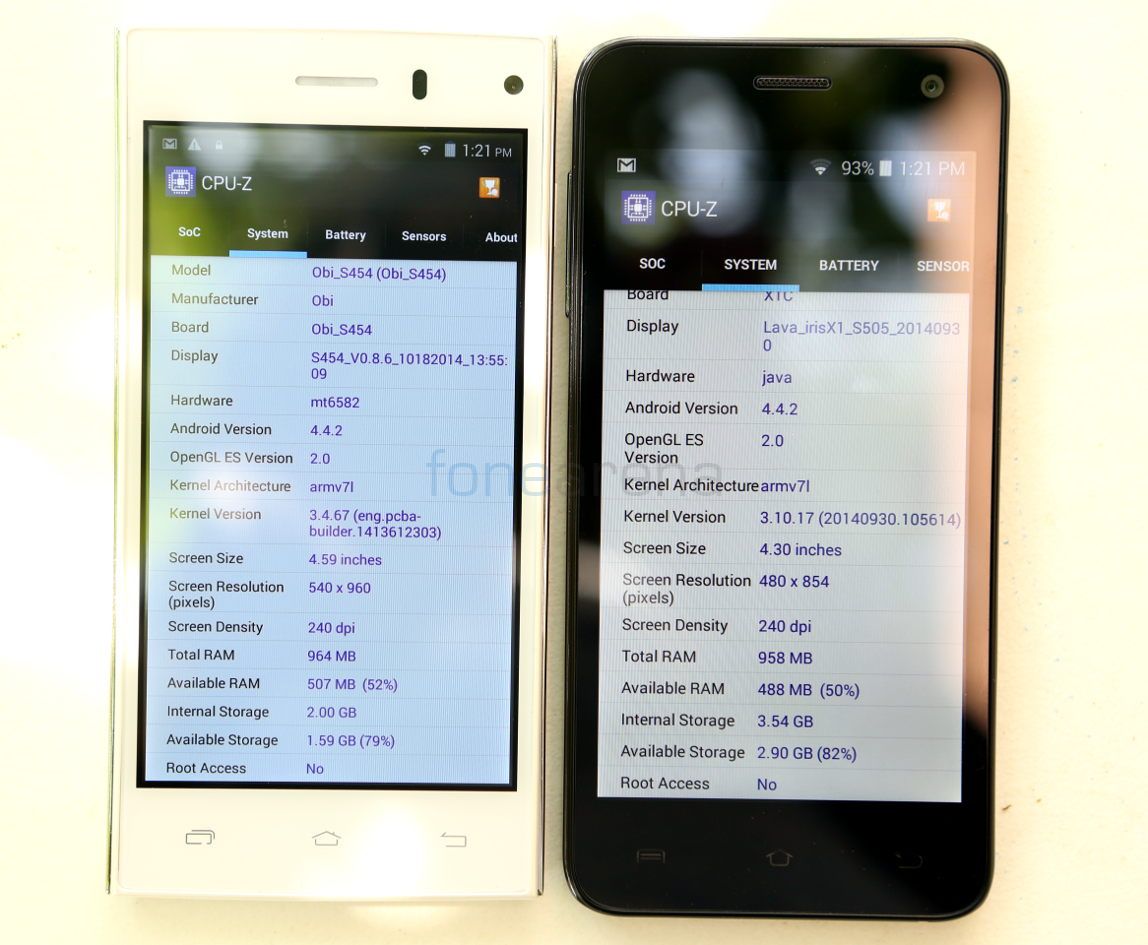
Even though both the smartphones have 1GB of RAM, the Obi Alligator S454 has 964MB of usable RAM, out of which 478MB of RAM is free when the phone is idle. In the Lava Iris X1 only 958MB of RAM is usable, out of which about 500MB of RAM is free when it is idle. The Obi Alligator offers better multitasking since it has lag-free UI.
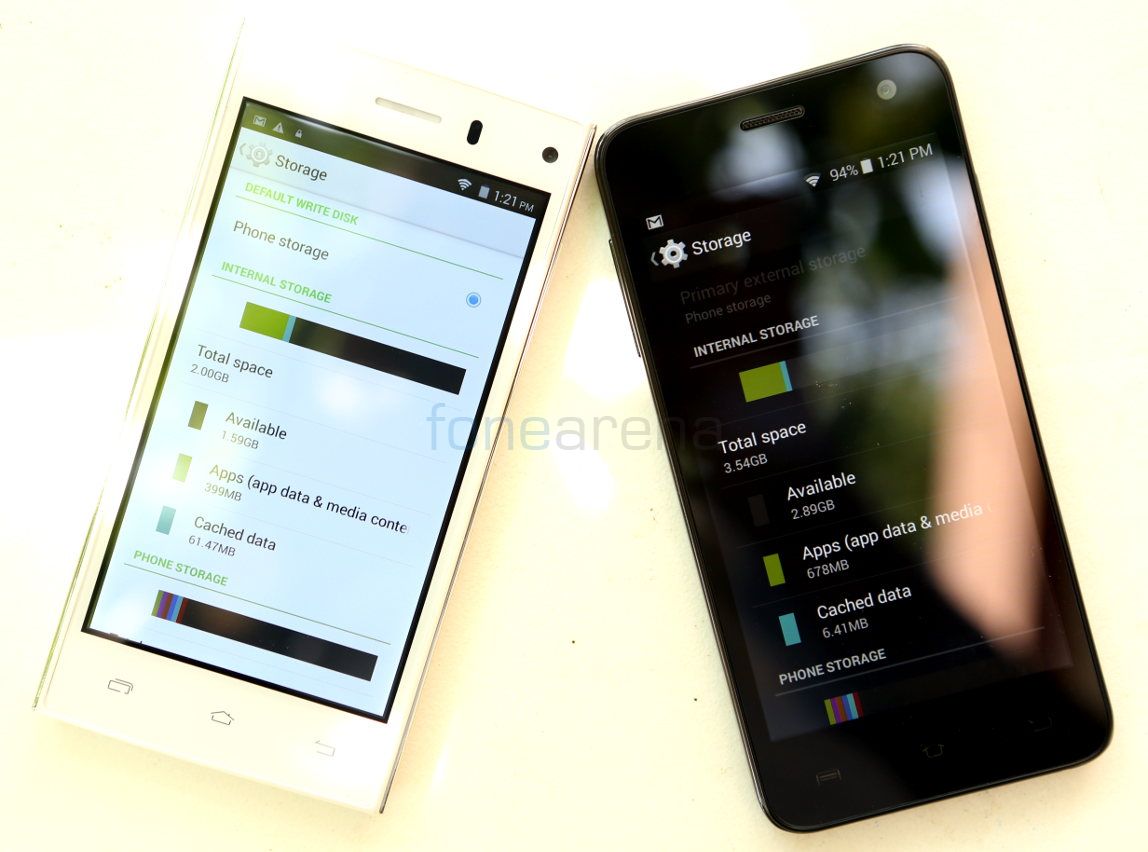
Coming to the internal storage, the Obi Alligator has 8GB of internal storage, out of which 1.58GB of storage is available for apps and 4.1GB for mass storage. The Lava Iris X1 too comes with 8GB of internal storage, out of which 2.42GB is available for app and 2.88GB for mass storage. Both the smartphones have option to move compatible apps from the internal storage to the SD card and both these lack USB OTG support.
In the end, the Obi Alligator is better in several aspects compared to the Lava Iris X1 and is also cheaper. It is definitely a good value for money smartphone.
Concluding, the advantages of the Obi Alligator are the price, display, performance and overall decent package. Advantages of the Lava Iris X1 over the Obi Alligator include build quality and camera performance.

